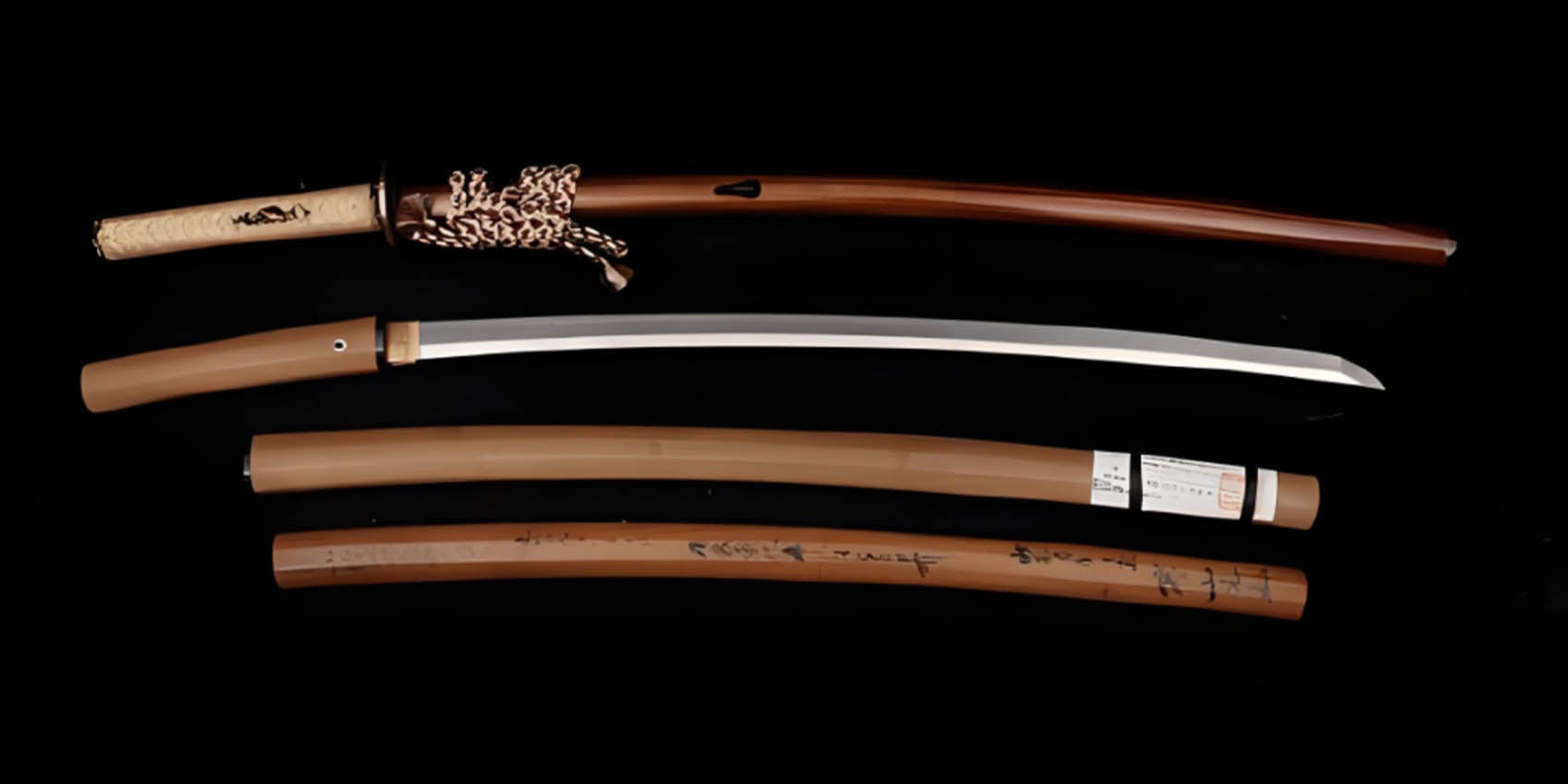The Most Famous Lost Sword from Japan: The Legend of Honjo Masamune

The Most Famous Lost Sword from Japan: The Legend of Honjo Masamune
Japan is celebrated for its centuries-old sword-making tradition, and among its many legendary blades, none surpass the fame of the Honjo Masamune, often called the most famous lost sword from Japan. This iconic blade not only showcases the pinnacle of Japanese craftsmanship but also embodies the spirit of the samurai. Today, it remains a mystery and a symbol of perfection for sword collectors and historians alike.
What is the Honjo Masamune?
The Honjo Masamune is a legendary katana crafted by Goro Nyudo Masamune, widely regarded as Japan’s greatest swordsmith. Masamune’s work is celebrated for its balance of sharpness and durability, representing the ideal qualities of a real authentic katana. His ability to combine strength with elegance has made his swords the gold standard in Japanese swordsmithing.
The Honjo Masamune is renowned for its exceptional blade, which featured a perfectly forged edge and a beautiful hamon (temper line). Its design reflects the meticulous artistry of its creator, including the parts of the katana, such as the blade, tsuka (handle), tsuba (guard), and its carefully crafted sword sheath. The katana scabbard, typically made of lacquered wood, completed its elegant and practical design, making it a highly prized weapon among samurai.
This katana’s fame also stems from its historical significance. It was used in battle during the Sengoku period and eventually became a symbol of authority for the Tokugawa Shogunate, Japan’s ruling family for over 250 years. As a result, the Honjo Masamune became an emblem of power, honor, and prestige, making it one of the most significant old samurai swords in Japanese history.
The Mysterious Disappearance of the Honjo Masamune
Despite its legendary status, the Honjo Masamune is now considered a lost sword, adding to its mystique. After World War II, during the Allied occupation of Japan, thousands of traditional Japanese swords were confiscated, including many real authentic katanas. According to records, the Honjo Masamune was handed over by Tokugawa Iemasa, a descendant of the Tokugawa family, to the U.S. forces as part of Japan’s disarmament policies. However, after being surrendered, the sword disappeared, and its whereabouts remain unknown to this day.
There are many theories surrounding its fate. Some speculate that the sword might be hidden in a private collection, while others fear it was destroyed during the chaotic post-war years. It is also possible that the Honjo Masamune resides in an unknown museum, misidentified as an ordinary blade. Regardless of its current location, its disappearance has only heightened its legend, making it the most famous lost sword from Japan.
Key Features of the Honjo Masamune
-
Superior Craftsmanship: The Honjo Masamune exemplified the pinnacle of Japanese swordsmithing, with its perfectly forged blade, intricate parts of the sword, and elegant katana scabbard.
-
Historical Significance: As a weapon passed down through the Tokugawa Shogunate, it represented authority and tradition, making it one of the most important old samurai swords.
-
Symbol of Samurai Culture: This real authentic katana embodied the Bushido spirit, symbolizing strength, honor, and resilience.
-
Mystery and Allure: Its disappearance has elevated it to mythical status, inspiring countless theories and ensuring its place as an eternal symbol of Japanese history.
The Art of Katana Crafting: Modern Revival
Although the Honjo Masamune is lost, its legacy lives on through modern swordsmiths who replicate the parts of katana and traditional methods of forging real authentic katanas. These hand-forged katanas honor the meticulous craftsmanship of the past, blending historical techniques with contemporary materials.
Traditional Parts of a Katana
A katana’s design is both functional and artistic, with each component playing a critical role:
- Blade (Nagasa): Crafted with a precise katana length, the blade is the most important part of the sword, combining sharpness and durability.
- Tsuka (Handle): Wrapped in ray skin and silk or leather, the handle ensures a firm grip during combat.
- Tsuba (Guard): This decorative yet practical part protects the hand while adding aesthetic value.
- Sword Sheath (Saya): The katana scabbard, typically made of lacquered wood, preserves and protects the blade when not in use.
Modern artisans use these traditional designs to create functional and collectible katanas inspired by the Honjo Masamune.
COOLKATANA Materials and Techniques
Today’s hand-forged katanas are crafted using high-quality materials, including:
- 1095 High-Carbon Steel: Renowned for its sharpness and ability to maintain a razor edge.
- T10 Tool Steel: A durable steel ideal for making battle-ready swords.
- Tamahagane Steel: The traditional Japanese steel used in authentic samurai swords, valued for its strength and beauty.
By employing traditional techniques such as folding steel, clay tempering, and multi-step polishing, modern katanas emulate the craftsmanship of historical masterpieces.
coolkatana.com
Honjo Masamune’s Cultural Impact
The Honjo Masamune has transcended history, becoming a symbol of excellence in modern culture. It frequently appears in:
- Video Games: Featured as a powerful weapon in franchises like Final Fantasy and Chrono Trigger.
- Anime and Manga: Revered in samurai-themed stories, often depicted as the ultimate blade.
- Movies: Inspires katana designs in films like Kill Bill, highlighting its legacy as a symbol of honor and mastery.
These cultural references keep the story of the Honjo Masamune alive, inspiring new generations to explore the art of Japanese swordsmithing.
Conclusion: Honoring the Spirit of the Honjo Masamune
The Honjo Masamune remains the most famous lost sword from Japan, a masterpiece of swordsmithing and a symbol of the samurai spirit. While its whereabouts remain unknown, its legacy endures through modern craftsmanship and its profound influence on history and culture.
Owning a real authentic katana, complete with a traditional sword sheath and precisely crafted parts of the sword, allows enthusiasts to connect with the rich tradition of Japanese sword-making. Whether for martial arts, display, or collection, a hand-forged katana is a timeless tribute to the art and legacy of Japan’s most famous swords.



